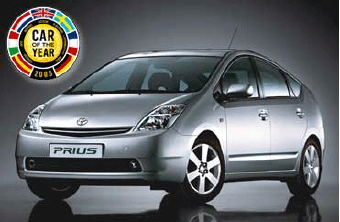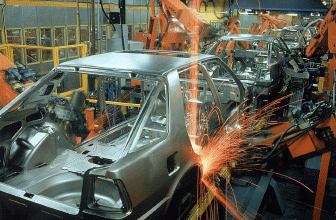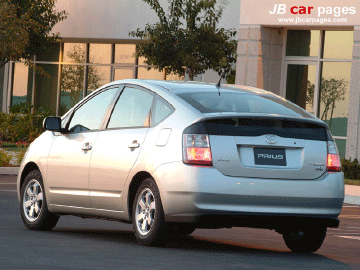tomiwa aladekomo

I buy.
Adopting the same analytical position as Godelier in his depiction of the kwamatnie as embodying the alienated origins of humanity’s forms of production, I would argue that modern products marketed on the basis of their ecological or moral embody an alienated moral sense. In order words, people extend to their objects the task of representing their morality and to some extent serving as moral agents for them. Discussing a fictional advertising campaign for the VW Beetle, a team of people and I once decided that the decision to drive a car like the VW Beetle amidst all the options available today would represent “conspicuous conservation.” In other words the choice of that automobile is a conscious reaction to a certain world situation and a decision to make a purchase in reaction to that.
Most in the modern world would not argue with the proposition that what a person purchases reflects a certain sense of identity they wish to project, whether to the outside world or simply to themselves. One of the geniuses of the juggernaut that is capitalism is the way it elevates consumption as the end point of every identity point. Upper class aspiring, nouveau riche Americans can buy the new Maybach before it arrives on these shores each year, while Arnold Schwarzenegger wannabes can anoint their homes with a fleet of gas guzzling Hummers and those of hippy birth and patrons of the Discovery channel can buy the Beetle or even better, the Toyota Prius because of their desire to protect the planet.
One question that this raises though is if it is possible to make a purchase without a motive of this sort. Couldn’t the decision to purchase a smaller car simply be a practical consideration for someone living in the city? The answer to this is buried in the living strata of the capitalist system. With so many products on the market, one must make a choice based on a huge number of factors. Gone are the days when your only choice was a Model-T, in any color as long as it’s black. Inevitably, a person buying a car must make their decision to make a purchase on a wide range of factors. If practicality is what you seek, whether in terms of size or fuel consumption, there is no shortage of options. At best, you’ve reduced your range of potential purchases from 100 cars to 10. Combine this with the ever present coverage of environmental issues in the news and the high profile entanglement of the US in the middle East in picking the beauty queen from this final ten, you’ll inevitably need to decide if world peace and ecological concern are a part of your moral model. Essentially no one gets away with making purchases that do not in some manner or the other encompass their beliefs or moral choices. Objects have pulled up to a resting place as arbiters of our life choices, whether we want them in that position or not. The proposition that “I am, therefore I buy” that drives the capitalist market has been extended into a new paradigm of “what I am, I buy”.
From Wikipedia.org is this descriptio of the Prius: “The Toyota Prius is one of the world's first commercially mass-produced and marketed hybrid automobiles. Manufactured by Toyota, the Prius first went on sale in Japan in 1997, and was introduced to the worldwide market in 2000. By the end of 2003, nearly 160,000 units had been produced for sale in Japan, Europe, and North America.” As a hybrid automobile, the Prius works by switching between the use of gas and an electric power source. A thorough redesign of the automobile, Toyota went to great lengths to make it as efficient as possible, recovering energy wherever possible and using unexpected or unusual technological choices to ensure that it was as efficient as possible. Therefore it makes sense that those who are worried about emissions, the dependence on foreign fuel, and the effect of automobiles on the environment have found it to be one of, if not the best car on the market for them. And thus the success of the car, particularly as oil takes a higher profile in the news and the gas prices rise.
Yet there is a certain ineffectiveness to some of the morality that drives these purchases. For example, Prius users think they’re saving the environment by using cars that cause less pollution, but with the way energy policy is put together in America, they’re doing a lot less than they think they are. This is because each company has a cap on the total emission level of their cars. The more Priuses or hybrids they sell, the more room they have to create more gas guzzling monsters like the Landcruiser or the Hummer. In order words, as Mauss overlooks the ability of gift giving conditions to reinforce rigid social orders by hiding under a veneer of civility and geniality, the purchase of environmentally conscious products like the Prius sometimes conceal within them their reinforcement of certain standards of environmental abuse.the object as identity
One could argue that an object has a real function as a status marker. That is, the role it plays in delineating a person’s status in society or as a representation of that person’s identity is as real and important as it’s practical role, say that of getting the person from point A to B. Thus in designing a house, you might require four light sources to adequately brighten a room and three status markers, whether art within a certain mold or a couch reflecting your taste in modernist design. In the same manner, the purchase of a Prius would serve as an important point in the creation of a self-identity for its new owner. To some extent, most people can relate to this idea. The purchase of a new coat or a particular computer is often the catalyst or symbol of a redefinition of self by people seeking a change in their lives. You might remember hearing, or even speaking, the words, “I feel cooler just by owning this item.”the object as arbiter of social relations
In his discussion of the commodity world, Marx posits that in the capitalist world, people come to relate to each other through their commodities. The commodity, an embodiment of alienated labor produced only for the purpose of exchange and the valorization of capital comes to mediate all relations between people. While Marx may overstate things (declaring one’s love for a partner or mother require commodity exchange only twice a year and occur much more frequently than that), he is right that commodities do come to play a very important role in defining or even creating relations between people. Thus there are clubs for environmentally conscious people, where the ownership of a Hummer would be seriously frowned upon and the purchase of a Prius cheered for. People meet each other through their affinities for certain possessions or because their possessions are markers of a certain shared identity.
The question of what it means for identity and social relations to be constructed through objects is a puzzling one. While Marx argues it as an overwhelmingly negative thing, it is hard to find comeplete agreement with that in the real world. On the one hand, it is not difficult to find people who identify more with their objects than with other humans. Anyone who has dealt with the investment banker more involved with the big screen TV and cars that his money allows him to buy than with the people in the companies he invests in, can definitely attest to that. Yet different and more comfortable than that is the construction of an identity around the ownership of objects that others share an interest in and the creation of life, the reproduction of social structures, the creation of vibrant life through an interest in everything from hybrid technology cars to organic foods and Shaker aesthetics. We do relate to each other through our objects (although not exclusively through them), but unlike Marx, I do not see that as essentially alienating humans from one another.



the valuation of objects
Yet another theory of Marx that turns on the things hidden within the object and its mediation of social relationships is his theory of the commodity and its value. Marx claims that an object has value because of the human labor that went into it’s creations and is in fact an embodiment of that very labor. He sets aside the object’s usefulness into a different category of use value and argues that is different from it’s exchange value, which essentially is the ability to exchange of a certain amount of labor embodied in one object for the labor embodied in another.
Yet from our discussions above, we can easily see that the object obscures within itself more than just the labor that went into it’s production. Embodied within an object is not only that labor, but also a general social consciousness, the key to social relations and a whole host of human fears and hopes brought to physical form. Marx argues under his law of commodity fetishism that our social nature is destroyed by the separation of the use value of an object from its exchange value. Yet, this is not entirely true in real life. A premium is charged for the use of the Prius beyond the actual manufacturing cost, because of it’s very use value and the things that it represents for those who choose to drive it. The long waits that accompany the order of a Prius today also represent an additional premium, which the manufacturers are only able to extract because the Prius is so much more than any car made with an equivalent amount of labor.
Not being a political economist, it is hard for me to create a full challenge of Marx’s theories concerning commodity. Yet, it does seem to me that in searching for the basic rules upon which the market operates, he over simplifies and resorts to a purist form of capitalism that cannot come in place. The full range of meanings that an object embodies is always at least partially hidden from its consumers. We could not get much done if every time we sat to use a table, or drive a car, or eat from a plate, we had to contemplate not only the labor that created those items, but the process by which they got to us, their environmental ramifications, our relationship through them to their manufacturers and the entire range of things which each object hides. From that partial list though, we can see already the many things that Marx has ignored in creating his ideas. Do these things not play a part in the valuation of objects? Are there not premiums built into the price of diamonds to compensate for the destruction wrought in their creation (even if that compensation does not go to those who bear the burden of that destruction)? Does the price of oil not contain within it, not only the labor and manufacturing costs of its production, but also the fear of its increasing scarcity and what that will mean for our current way of life?